The cooler mornings and the slowly changing flora across western forests offer folks visiting our public lands some of the best scenery of the year. It’s also maybe the best time of the year to see wildlife while driving into the woods, and for anglers, it’s the season that presents some opportunities to expand their sporting opportunities.
Not a hunter? Neither am I, really. I’ll occasionally jump-shoot ducks in October and November and I’ve bought my share of deer and elk tags, but I don’t devote a lot of time to chasing game. If it were my thing, I’ve come to realize, I’d do more of it. But it’s not, so I don’t.
But come September, when it’s still technically “summer” in the mountains, I do keep a .22-caliber air rifle in the back seat of the truck when I drive into the hills to chase trout. Grouse season around the West generally opens at the tail end of August, and it continues through the fall and into the winter in some states. Here in Idaho — and in much of the West — the legal methods of take for forest grouse (ruffed grouse, blue grouse and spruce grouse) are plenty. Most serious grouse hunters will use 12- or 20-gauge shotguns, and hunt these plentiful game birds over dogs. But state regulations here in Idaho allow for all hunters to target grouse with rimfire rifles, air guns, slingshots, archery gear and even sticks and rocks.
The latter speaks to the general gullibility of forest grouse — if you can reasonably harvest one with a stick or a rock, chances are you’re not chasing a very stable genius.
Last week, while on a trip up into the Fall River country along the Wyoming border, I came across a blue grouse (Idaho’s Fish and Game Department now calls them “dusky” grouse) walking slowly and deliberately across the gravel road that slices through the Targhee National Forest enroute to the river. Grouse, as they wander across roads, tend to move slowly, which might work to protect them from predators like hawks or owls, but it makes them really vulnerable to dilettante hunters like me.
I hit the brakes about 20 yards from the bird and steered the truck to the shoulder. Just as deliberately as the bird that was slowly creeping across the road, I got out of the truck, grabbed a can of pellets and my air rifle — a sweet little Benjamin I acquired years ago — and loaded the weapon. I then acquired my target — the “fool hen” had walked into the barrow ditch and was working its way up into the lodgepoles — and fired.
The next day, after browsing the web for some game-bird recipes and spending some creative time in the kitchen, I showed up at a small cocktail party with croissants stuffed with finely chopped grouse breast, porcini mushrooms, cream cheese, jalapeno peppers and spicy Italian sausage. The appetizer was a hit, especially for the non-hunters in the crowd who were eager to try something more exotic than bacon-wrapped water chestnuts or chips and salsa.
As an angler who largely fishes the backcountry, I see a lot of grouse, and I see them all summer long. But grouse season doesn’t start until the last weekend in August, which leaves at least a month where solid creek fishing and “hunting” season overlap. And no, I’m not some proud and mighty hunter — taking grouse with an air rifle while the truck is in “park” is not some grand sporting adventure. Rather, it’s an opportunity to glean a nice, clean meal from the wild, and I would bet a small fortune that forest grouse are among the tastiest of game birds anyone with a pellet gun can go after. What just about every grouse lacks in sheer street-smarts, it makes up in flavor. By itself or combined with other meats and spices, a mature forest grouse of any subspecies is truly an amazing meal.
On the elk and deer hunts I’ve done over the years, most of my fellow hunters pack a small pistol or even a pellet pistol as they glass for big game — they may not get an elk every time they leave camp, but if they do happen across a ruffy or a spruce grouse, they won’t go back to camp empty-handed. And that’s something.
Here in the Rockies, forest grouse are generally plentiful. Their cousins, the sage grouse and the prairie chicken (both greater and lesser), both face challenges, largely due to habitat loss and degradation. In Idaho, in my memory, sage-grouse season used to last a week or more, and hunters could harvest four birds a day. Today, the season lasts but two days, and hunters are limited to a single bird a day. The prairie chicken is mostly a midwestern or Great Plains bird, and its numbers have flagged over the last century, largely due to cattle ranching and agriculture that’s soaked up much of the available habitat. Other non-native game birds, like Hungarian partridge, chukar and pheasant tend to do better in disturbed habitat, and they have supplanted both sage grouse and prairie chickens throughout much of the birds’ native ranges.
Here in the Northwest, hunters still get to enjoy hunting Columbian sharp-tailed grouse in decent numbers, though, again, habitat issues have suppressed these birds’ numbers, too.
But for anglers in trout country, ruffed, blue (dusky) and spruce grouse make up the bulk of the sporting opportunities. For the record, the blue grouse has been “split” into two separate subspecies — the dusky grouse (which is what I see a lot of in the woods of eastern Idaho) and the sooty grouse, which looks virtually identical, but thrives in the old-growth timber of the Northwest.
If you’re tuned in to the annual machinations of your local forest, you can likely predict where forest grouse will be found. For instance, this year, we had a bumper crop of huckleberries on the Caribou-Targhee National Forest. I can reasonably depend on grouse to be found in the late summer and through fall in the same huckleberry thickets where I harvest fruit. Later in the year, the huckleberries dry out, kind of like raisins, and the grouse really do love them. They also eat currants, elderberries, gooseberries and other wild forest fruit.
Come late August, I tend to drive a little slower when I leave the pavement, and I pay attention to the barrow ditches and the dusty roadsides, where grouse will occasionally show up searching for gravel that they use to help grind their food into digestible mush. And, I stretch my trusty pellet rifle across the back seat of the truck, within arm’s reach, just in case.
While it’s been a while since I’ve harvested trout for the grill, the grouse that turn up while I’m “fishing” almost always end up on the table, or in an appetizer for folks interested in tasting one of the finest dishes nature provides.




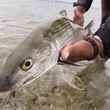
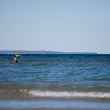
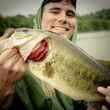





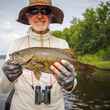



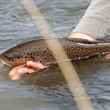





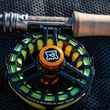



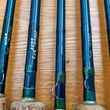


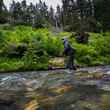
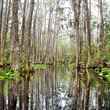
Comments